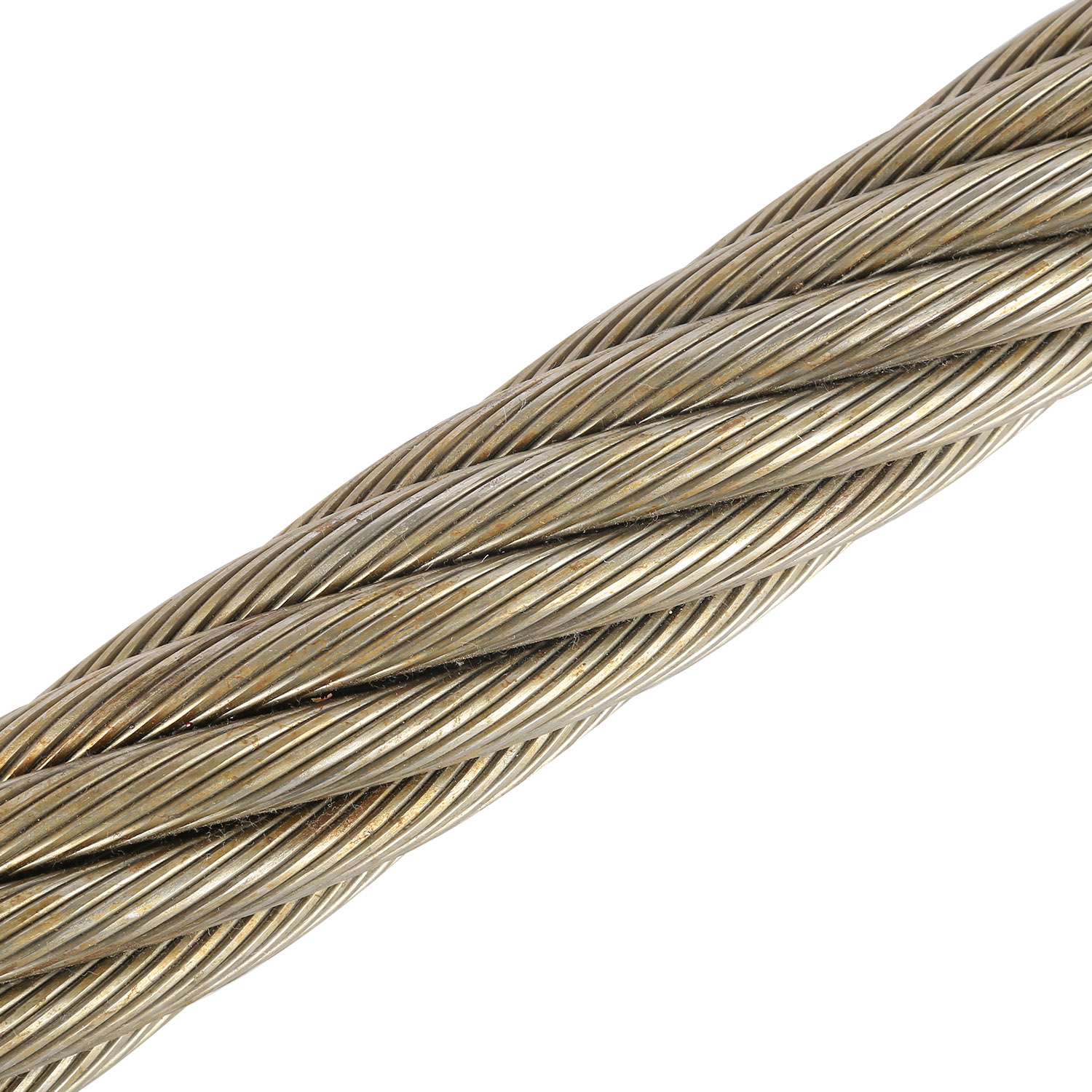Table of Contents
เมื่อต้องเลือกประเภทเหล็กที่เหมาะสมสำหรับโครงการของคุณ มีปัจจัยสำคัญบางประการที่ต้องพิจารณา สองตัวเลือกยอดนิยมคือเหล็กสปริงและเหล็กกล้าคาร์บอน ซึ่งแต่ละตัวเลือกมีคุณสมบัติและข้อดีเฉพาะตัวของตัวเอง ในบทความนี้ เราจะเปรียบเทียบเหล็กสปริงกับเหล็กกล้าคาร์บอนเพื่อช่วยคุณพิจารณาว่าเหล็กชนิดใดที่เหมาะกับความต้องการเฉพาะของคุณมากขึ้น
เหล็กสปริงเป็นเหล็กกล้าคาร์บอนสูงประเภทหนึ่งที่ขึ้นชื่อในเรื่องความสามารถในการคืนรูปเดิมได้หลังจากนั้น ถูกงอ บิด หรือผิดรูป ทำให้เป็นตัวเลือกที่เหมาะสมที่สุดสำหรับการใช้งานที่ความยืดหยุ่นและการฟื้นตัวเป็นสิ่งสำคัญ เช่น ในการผลิตสปริง ใบมีด และส่วนประกอบอื่นๆ ที่ต้องทนทานต่อความเค้นและความเครียดซ้ำๆ โดยทั่วไปเหล็กสปริงจะทำจากโลหะผสมของเหล็กกล้าคาร์บอนสูง ซึ่งให้คุณสมบัติเฉพาะตัว
ในทางกลับกัน เหล็กกล้าคาร์บอนเป็นคำทั่วไปที่หมายถึงโลหะผสมเหล็กใดๆ ที่มีคาร์บอนเป็นองค์ประกอบโลหะผสมหลัก เหล็กกล้าคาร์บอนขึ้นชื่อในด้านความแข็งแกร่งและความทนทาน ทำให้เป็นตัวเลือกยอดนิยมสำหรับการใช้งานที่หลากหลาย ตั้งแต่การก่อสร้างไปจนถึงการผลิตยานยนต์ เหล็กกล้าคาร์บอนสามารถจำแนกเพิ่มเติมได้เป็นเหล็กกล้าคาร์บอนต่ำ ปานกลาง และสูง โดยแต่ละชนิดมีคุณสมบัติและลักษณะเฉพาะของตัวเอง
ความแตกต่างที่สำคัญประการหนึ่งระหว่างเหล็กสปริงกับเหล็กกล้าคาร์บอนคือปริมาณคาร์บอน โดยทั่วไปแล้วเหล็กสปริงจะมีปริมาณคาร์บอนสูงกว่าเหล็กกล้าคาร์บอน ซึ่งทำให้เหล็กสปริงสามารถคืนรูปเดิมได้หลังจากการเสียรูป ปริมาณคาร์บอนสูงนี้ยังทำให้เหล็กสปริงเปราะและเหนียวน้อยกว่าเหล็กกล้าคาร์บอน ซึ่งอาจส่งผลต่อความสามารถในการขึ้นรูปและการเชื่อมได้
ในทางตรงกันข้าม เหล็กกล้าคาร์บอนขึ้นชื่อในด้านความคล่องตัวและการผลิตที่ง่ายดาย เหล็กกล้าคาร์บอนสามารถกลึง เชื่อม และขึ้นรูปเป็นรูปทรงและขนาดต่างๆ ได้อย่างง่ายดาย ทำให้เป็นตัวเลือกยอดนิยมสำหรับการใช้งานที่หลากหลาย อย่างไรก็ตาม ปริมาณคาร์บอนที่ต่ำกว่าของเหล็กกล้าคาร์บอนหมายความว่าเหล็กอาจมีความยืดหยุ่นและความยืดหยุ่นไม่เท่ากันกับเหล็กสปริง
ความแตกต่างที่สำคัญอีกประการหนึ่งระหว่างเหล็กสปริงและเหล็กกล้าคาร์บอนก็คือความแข็ง โดยทั่วไปแล้วเหล็กสปริงจะถูกชุบแข็งและอบคืนตัวเพื่อให้ได้ความแข็งในระดับสูง ซึ่งช่วยให้สามารถรักษารูปร่างและความแข็งแกร่งไว้ได้ภายใต้สภาวะที่รุนแรง ในทางกลับกัน เหล็กกล้าคาร์บอนสามารถชุบแข็งได้ด้วยการอบชุบ แต่อาจมีความแข็งไม่ถึงระดับเดียวกับเหล็กสปริง
ในแง่ของต้นทุน โดยทั่วไปแล้วเหล็กกล้าคาร์บอนจะมีราคาไม่แพงกว่าเหล็กสปริง จึงเป็นที่นิยม ทางเลือกสำหรับโครงการที่คำนึงถึงงบประมาณ อย่างไรก็ตาม คุณสมบัติเฉพาะของเหล็กสปริงอาจพิสูจน์ให้เห็นถึงต้นทุนที่สูงขึ้นสำหรับการใช้งานที่ความยืดหยุ่นและการคืนสภาพเป็นสิ่งสำคัญ
โดยสรุป ทั้งเหล็กสปริงและเหล็กกล้าคาร์บอนต่างก็มีคุณสมบัติและข้อดีเฉพาะตัวของตัวเอง เหล็กสปริงขึ้นชื่อในด้านความยืดหยุ่นและความยืดหยุ่น ทำให้เหมาะสำหรับการใช้งานที่ต้องมีความเค้นและความเครียดซ้ำๆ กัน ในทางกลับกัน เหล็กกล้าคาร์บอนมีคุณค่าในด้านความแข็งแกร่งและความคล่องตัว ทำให้เป็นตัวเลือกยอดนิยมสำหรับการใช้งานที่หลากหลาย ท้ายที่สุดแล้ว ตัวเลือกระหว่างเหล็กสปริงและเหล็กกล้าคาร์บอนจะขึ้นอยู่กับความต้องการเฉพาะของโครงการและคุณสมบัติที่สำคัญที่สุดสำหรับคุณ

On the other hand, Carbon Steel is a more general term that refers to any steel alloy that contains carbon as the main alloying element. Carbon steel is known for its strength and durability, making it a popular choice for a wide range of applications, from construction to automotive manufacturing. Carbon steel can be further classified into low, medium, and high carbon steels, each with its own unique properties and characteristics.
One of the main differences between Spring Steel and carbon steel is their carbon content. Spring steel typically has a higher carbon content than carbon steel, which gives it its unique ability to return to its original shape after being deformed. This high carbon content also makes spring steel more brittle and less ductile than carbon steel, which can affect its machinability and weldability.
In contrast, carbon steel is known for its versatility and ease of fabrication. Carbon steel can be easily machined, welded, and formed into a wide range of shapes and sizes, making it a popular choice for a variety of applications. However, the lower carbon content of carbon steel means that it may not have the same level of resilience and flexibility as spring steel.
Another key difference between spring steel and carbon steel is their hardness. Spring steel is typically hardened and tempered to achieve a high level of hardness, which allows it to maintain its shape and strength under extreme conditions. Carbon steel, on the other hand, can be hardened through heat treatment, but it may not reach the same level of hardness as spring steel.
In terms of cost, carbon steel is generally more affordable than spring steel, making it a popular choice for budget-conscious projects. However, the unique properties of spring steel may justify the higher cost for applications where flexibility and resilience are critical.
In conclusion, both spring steel and carbon steel have their own unique properties and advantages. Spring steel is known for its flexibility and resilience, making it ideal for applications where repeated stress and strain are common. Carbon steel, on the other hand, is valued for its strength and versatility, making it a popular choice for a wide range of applications. Ultimately, the choice between spring steel and carbon steel will depend on the specific requirements of your project and the properties that are most important to you.

